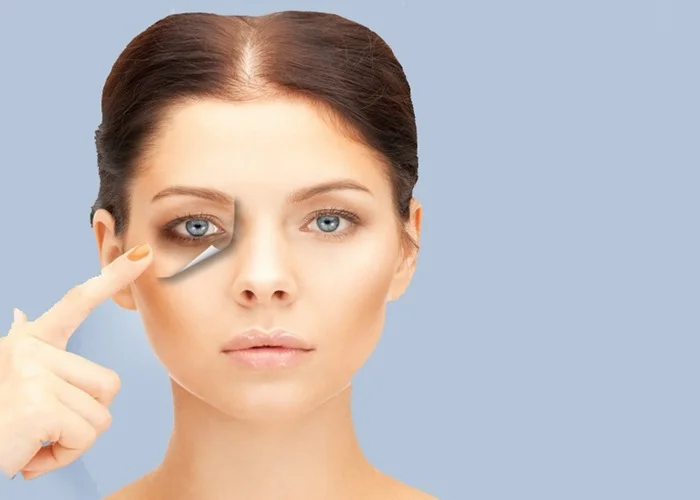The journey into motherhood is a beautiful yet challenging experience, often accompanied by various physical changes. One of the most common concerns for new mothers is the appearance of dark circles under the eyes. These can be attributed to several factors, including sleep deprivation, hormonal changes, and stress. Understanding how to effectively address these dark circles is essential for new mothers who wish to restore their natural glow and confidence.
In this article, we will explore the causes of dark circles after delivery, effective home remedies, lifestyle adjustments, and professional treatments available. By following these guidelines, new mothers can take proactive steps to reduce the appearance of dark circles and promote overall skin health.
Understanding Dark Circles
What Are Dark Circles?
Dark circles are characterized by a darker pigmentation under the eyes, often giving a tired or worn-out appearance. They can vary in color from blue to brown and may be accompanied by puffiness or bags under the eyes.
Causes of Dark Circles After Delivery
Sleep Deprivation: New mothers often experience disrupted sleep patterns due to nighttime feedings and caring for a newborn. This lack of sleep can lead to the appearance of dark circles.
Hormonal Changes: Pregnancy and childbirth cause significant hormonal fluctuations that can affect skin pigmentation and elasticity.
Stress: The emotional and physical demands of caring for a newborn can lead to increased stress levels, contributing to skin issues like dark circles.
Dehydration: New mothers may forget to drink enough water while focusing on their baby’s needs, leading to dehydration that can accentuate dark circles.
Nutritional Deficiencies: A lack of essential nutrients in a mother’s diet can impact skin health, making dark circles more prominent.
Home Remedies for Dark Circles
1. Cold Compress
Using a cold compress can help reduce swelling and constrict blood vessels under the eyes, minimizing the appearance of dark circles.
How to Use: Apply a cold compress or chilled spoons to the under-eye area for 10-15 minutes daily.
2. Green Tea Bags
Green tea contains antioxidants that may help reduce pigmentation and soothe tired eyes.
How to Use: Refrigerate used green tea bags and place them on your eyes for 10-15 minutes.
3. Cucumber Slices
Cucumbers have soothing properties that can help cool the skin and reduce puffiness.
How to Use: Cut fresh cucumber slices and place them over your closed eyes for about 15 minutes.
4. Almond Oil
Almond oil is rich in vitamin E, which can nourish the skin and improve its appearance.
How to Use: Gently massage a few drops of almond oil under your eyes before bedtime.
5. Hydration
Staying hydrated is crucial for maintaining healthy skin.
How to Implement: Aim for at least 8 glasses of water daily, along with hydrating foods like fruits and vegetables.
Lifestyle Changes
1. Prioritize Sleep
Establishing a sleep routine can help mitigate the effects of sleep deprivation on your skin.
Tips:
- Nap when your baby naps.
- Share nighttime duties with your partner if possible.
2. Balanced Diet
Eating a balanced diet rich in vitamins and minerals supports skin health.
Focus On:
- Leafy greens
- Fruits high in vitamin C
- Foods rich in omega-3 fatty acids (e.g., fish, walnuts)
3. Stress Management
Implementing stress-relief techniques can improve overall well-being and skin health.
Methods:
- Practice mindfulness or meditation.
- Engage in light exercise or yoga.
4. Sun Protection
Protecting your skin from UV rays is essential for preventing further pigmentation issues.
Recommendation: Use sunscreen with SPF 30 or higher daily, even when indoors.
Professional Treatments
For those seeking more immediate results or who find home remedies insufficient, various professional treatments are available:
1. Chemical Peels
Chemical peels can help exfoliate the top layer of skin, reducing pigmentation and improving texture.
Procedure: A dermatologist applies a chemical solution that causes the outer layer of skin to peel away over time.
2. Laser Therapy
Laser treatments target pigmentation directly and stimulate collagen production for healthier skin.
Types:
- Fractional laser therapy
- Intense pulsed light (IPL) therapy
3. Fillers
Dermal fillers can add volume under the eyes, reducing the appearance of hollowness that contributes to dark circles.
Consideration: Consult with a qualified practitioner for personalized treatment options.
4. Microneedling
Microneedling involves using fine needles to create micro-injuries in the skin, promoting collagen production and improving overall texture.
Benefits: Can enhance absorption of topical treatments applied afterward.
Conclusion
Dark circles after delivery are a common concern for many new mothers due to various factors like sleep deprivation, hormonal changes, stress, dehydration, and nutritional deficiencies. While home remedies such as cold compresses, green tea bags, cucumber slices, almond oil applications, and staying hydrated can be effective in reducing their appearance, lifestyle changes play a crucial role as well. Prioritizing sleep, maintaining a balanced diet, managing stress levels, and protecting your skin from sun damage are essential steps toward achieving healthier-looking skin.
For those looking for quicker results or more significant changes, professional treatments like chemical peels, laser therapy, fillers, or microneedling may be considered after consulting with a skincare expert. Remember that self-care is vital during this transformative phase of life; taking time for yourself will not only benefit your appearance but also enhance your overall well-being as you embrace motherhood.
Related topic:
Can Drunk Elephant Eye Cream Remove Dark Circles?
How To Treat Dark Circles At Home?
How Does Alba Botanica Fast Fix For Dark Circles Work?

